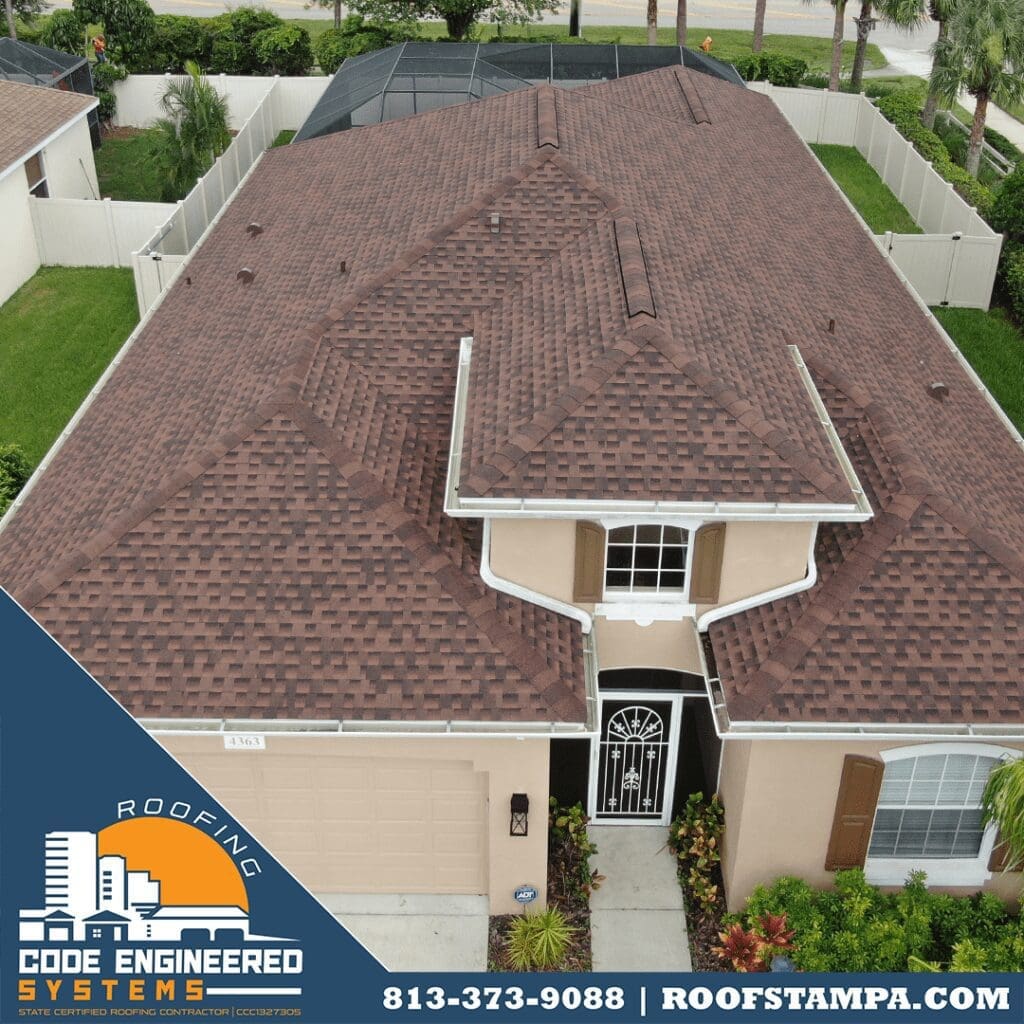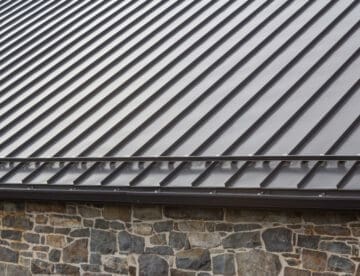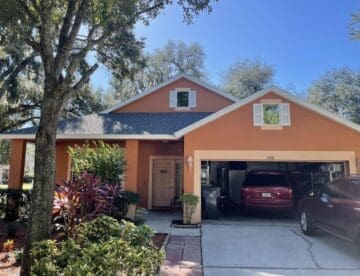There’s a good chance that your home has asphalt shingles on the roof. They’re the shingle of choice for about 80 percent of roofing jobs in the United States. While they’re usually the least-expensive option, that’s not the only reason they’re popular. Indeed, asphalt shingles are fast and simple to install, are available in dozens of color and profile choices, and are readily available. The major downside is that asphalt shingles are more susceptible to wind and storm damage than other roofing types, and they don’t last as long as other roofing types, such as metal and tile.
Types of Asphalt Shingles
Asphalt shingles come in three varieties: three-tab, architectural, and designer. A standard three-tab shingle is a very economical roofing choice, and is available with different warranty lengths. You can choose from several color choices, but they can look cheap and flat. That’s why architectural shingles are so popular.
Architectural shingles offer a “built-up” look with multiple laminations of fiberglass mat that aims to mimic the look of traditional roofing materials like wood shakes or slate tiles. They have more shadow lines than a three-tab shingle, and most people prefer the heftier look of architectural shingles.
Designer shingles are actually another form of architectural shingles, but they’re more of a premium product for high-end installation. They look thicker and more textured, with more prominent shadow lines. They look more substantial overall, especially compared to three-tab shingles.

Asphalt Shingle Components
Asphalt shingles start with a fiberglass mat or base. Depending on the type of shingle, there will be one layer of fiberglass or several. The fiberglass provides the main body for the shingle. Next a waterproof asphalt coating goes on top of the mat, followed by the granular ceramic coating. Some shingles add a reflective component to the granules, making it a “cool roof.” This type of improvement is worthwhile, as cool roofs also keep your entire home cooler, lowering your cost for using the air conditioner.
Each shingle has a strip of adhesive that faces up. The next course of shingles then covers and sticks to the adhesive strip of the layer below, tying the shingles together layer by layer.
Algae protection is another upgrade that manufacturers add to some of their asphalt shingles, and it’s a great addition in a humid climate like Florida’s. A bit of algae growing on your shingles doesn’t really hurt the roof, but it’s unsightly, and this product prevents it.
Florida’s storms, with high winds and pounding rain, can really take a toll on any building component besides concrete. While a Class 5 hurricane may level any type of structure, many components can be designed and built to withstand 130 mph winds, as you can see in this testing video from manufacturer GAF.
GAF is the largest manufacturer of asphalt shingles in North America, according to the Asphalt Roofing Manufacturers Association. In addition to algae protection, you can also choose a system with a wind guarantee of up to 130 mph. It’s worth reading the guarantee right at their site so you know exactly how it works.
Evaluating Storm Damage to Asphalt Shingles
While asphalt shingles are definitely durable, and some can be had with a 20+ year warranty, their composition is just not as durable as tile, for example. Clay tiles for roofing are made of clay only, just one material, that doesn’t degrade with exposure to sun and water. Asphalt shingles, with their layers, will degrade over time. They’re doing their job, but they’re wearing out. The asphalt layer(s) can dry over time and become brittle. Dried-out shingles will break apart more easily in wind and from impacts. Impacts, usually from hail, but sometimes from flying storm debris, can dramatically shorten the lifespan of asphalt shingles. As soon as a layer is missing, from part of the roof, that part is more vulnerable. In addition, the granular coating gradually wears off with wind, rain, snow, and debris.
If some shingles have broken during a storm, or have missing pieces after a storm, it’s important to evaluate the roof as soon as you can. Take a close look and call your insurance agent for guidance. Sometimes it’s possible to repair this type of damage that’s localized, or confined to just a few small areas. Expert contractors can replace shingles piecemeal, but you may not like the result. Depending on the age of the roof, the appearance of the new shingles might be starkly different. Those new shingles will stand out, and not in a pleasing way.
One thing to remember regarding repair, however: Florida’s building code states that if 25% of more of a roof’s surface is damaged, the entire roof must be replaced. At that point you’ll be dealing with your insurance company and a licensed contractor. If the roof is just old and at the end of its lifespan, you may be paying out of pocket and just working with a contractor, without involving your insurance company.
Signs That It’s Time to Replace the Roof
Whether your home’s roof has suffered storm damage or not, it’s a good idea to have a look periodically and assess the roof’s condition. If you see any of the following, talk to your insurance agent and call a qualified roofing contractor. If you know the manufacturer of your shingles, check their web site for a list of contractors.
Do you see any of these problems?
- A buildup of granules in the gutters or on the sidewalk.
- Dark streaks on the surface of the shingles.
- Pieces missing or broken corners.
- Holes from hail or other debris.
- Shingles curling at the edges.
We’re Here When You Need Us
If you’d like to talk about inspecting or replacing your roof, give us a call at 813-373-9088. Our team has more than 40 years of experience in roofing. You can also use this form and mention “wind and storm damage to asphalt shingles” and we will contact you. It’s preferable to be proactive and address any roofing problems before you notice a problem, of course.




